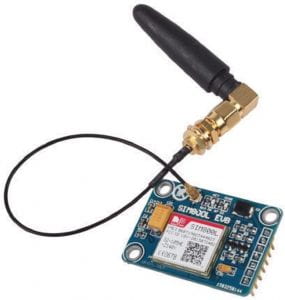How do we know where the balloon is after we launch it?
Our team aims to use a combination of radio tracking, GPS, and cellular communication (SMS) to track our payload.
The balloon will have a GPS module which allows the balloon electronics to record the exact location of the balloon, usually every minute. We will use a GPS chip that has no height restriction.
The Global Positioning System (GPS) works by a system of satellites which orbit the Earth and transmit their position and the time where they currently are. The GPS receiver can then triangulate where it is in space – the GPS module requires several available satellites for an accurate lock. (typically, 5m)
The main way the balloon will communicate with us on the ground is by radio, transmitting on a legal wavelength of ~70cm which is a frequency of ~430MHz. In order to achieve this, the balloon must have a ‘transmission antenna’ and we must have a ‘receiver antenna’.
The balloon transmits on an ‘omni-directional’ (all-directional) antenna, and we will receive the transmission on a directional ‘YAGI’ antenna. The reason for this is that the balloon does not know where we are, so it must transmit in all directions, whereas we know vaguely where the balloon is, so we can intercept the balloon’s signal from a known direction.
There is a problem, however. The radio signal works on a ‘line of sight’ basis – meaning that if the balloon happens to go behind a house, mountain or tree for example, we would not be able to pickup the signal transmitted by the radio. Therefore, we might lose the balloon when it lands. There is a solution, and this is to use SMS messaging as a backup for the radio. This guarantees the recovery of the balloon if we cannot access the radio signal but can access the SMS signal. So why don’t we simply use the SMS messaging only? The reason is that the mobile phone antennae are specially designed to only output signal on a horizontal basis – it would be a massive waste of time, money and energy to output the signal in all directions – because people simply are not in space (probably). The signal output from the SMS antennas can only be picked up below ~6,000m.
A combination of radio and SMS must be used to maximise the chances of recovery.
GPS, Radio and SMS modules left to right respectively:



